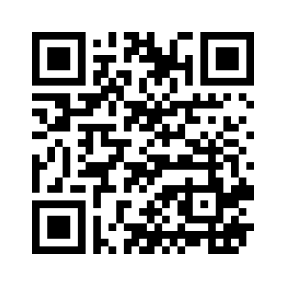This lucid dreaming guide reveals how to awaken inside your dreams, explore the science behind consciousness, and use sleep as a tool for creativity, healing, and personal growth. Becoming aware within dreams is not only a thrilling experience—it is also one of the most powerful practices for self-discovery.
To track your progress and unlock lucidity faster, try Dreamly — the AI-powered dream journal available on Android and iOS.
Lucid Dreaming Guide: What It Really Means
A lucid dream is the moment you realize you are dreaming while the dream continues to unfold. Unlike ordinary dreams that sweep you along, lucidity gives you awareness and sometimes control. This lucid dreaming guide shows how the experience can range from faint recognition to vivid clarity where you can fly, shape landscapes, or interact with characters who seem astonishingly real.
The Science of Lucid Dreams
Modern neuroscience confirms lucid dreaming as a unique state of consciousness. During REM sleep, the brain is active, and the prefrontal cortex—the seat of self-awareness—lights up when lucidity arises. Researchers have proven this through eye-movement signals sent by dreamers from within their dreams. This lucid dreaming guide highlights that science views lucidity not as fantasy but as a measurable phenomenon bridging waking and dreaming.
Why Follow a Lucid Dreaming Guide?
People seek lucid dreams for different reasons. Some crave pure adventure: flying, exploring impossible worlds, or bending the laws of reality. Others pursue healing, turning nightmares into empowerment. Creators use lucidity as a canvas for music, writing, or invention. Athletes rehearse skills in dreamscapes and carry improvements into waking life. And for spiritual seekers, lucid dreaming can feel like training for enlightenment—waking up inside sleep to understand the dreamlike nature of reality itself.
Essential Foundations
Any lucid dreaming guide begins with dream recall. Without memory, lucidity slips away unnoticed. Each morning, before touching your phone, remain still and record every fragment of your dreams. With time, fragments expand into full narratives. Recurring symbols—animals, corridors, elevators, storms—become dream signs that later trigger lucidity. Awareness in daily life is also essential. By asking “Am I dreaming?” during the day and performing small tests, the habit carries into sleep, where the impossible reveals itself.
Lucid Dreaming Techniques
This lucid dreaming guide emphasizes three effective methods:
- MILD (Mnemonic Induction of Lucid Dreams): Before sleep, repeat an intention such as “Tonight I will realize I’m dreaming,” while visualizing becoming lucid.
- WBTB (Wake-Back-to-Bed): Wake after 4–6 hours, stay up for 20–40 minutes, then return to bed. Entering REM with awareness greatly increases lucidity.
- WILD (Wake-Initiated Lucid Dream): Keep awareness while your body falls asleep, stepping directly into a dream. Challenging, but powerful when mastered.
Stabilizing and Exploring
First lucid dreams often collapse quickly from excitement. To prolong them, rub your hands, spin in circles, or focus on sensory details like textures or sounds. Once stabilized, possibilities unfold: flight, conjuring landscapes, asking dream characters questions, or simply observing. Many dreamers report receiving insights from figures who act with surprising intelligence, as if aspects of the subconscious become voices of wisdom.
Overcoming Nightmares Through Lucidity
A lucid dreaming guide must address fear. Nightmares often become opportunities once awareness arises. Monsters dissolve, storms clear, and threats reveal symbolic meaning. By asking dream figures why they are present, many discover hidden truths about unresolved emotions or past wounds. Lucidity transforms terror into growth, showing that even the darkest dream can lead to light.
Advanced Practices
With experience, lucid dreaming becomes a laboratory for creativity and self-discovery. Artists compose, athletes train, seekers meditate within the dream itself. Some ask profound questions—“What is my purpose?”—and receive symbolic or direct answers. As this lucid dreaming guide shows, practice does not just improve dreams; it enriches waking life with creativity, confidence, and deeper awareness.

Balance and Safety
Lucid dreaming is safe for most people, but balance is essential. Sacrificing sleep or obsessing over control can cause fatigue. The healthiest approach is consistent yet gentle practice, letting lucidity blossom naturally. Those with trauma or sleep disorders should seek guidance before intensive training. Properly approached, lucid dreaming enhances both nights and days, adding wonder without harm.
How Dreamly Supports Your Journey
This lucid dreaming guide would not be complete without tools. Dreamly provides an AI-assisted journal to strengthen recall, tag recurring symbols, and track progress. Over weeks, you will see clear patterns that bring lucidity within reach. Instead of scattered fragments, dreams become a map—showing where awareness arises and how your subconscious guides you.
Conclusion: Awakening Beyond Sleep
Every lucid dreaming guide ultimately points to the same revelation: lucidity is more than control—it is awareness. To awaken inside a dream is to glimpse the vastness of consciousness itself. Each night becomes a training ground where fear transforms, creativity flourishes, and wonder unfolds. This practice reminds us that reality—dreaming or waking—is more flexible, mysterious, and beautiful than we ever imagined.
Ready to begin your lucid dreaming practice? Start today with Dreamly on Android or iOS.






